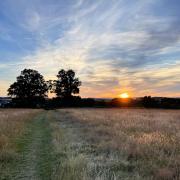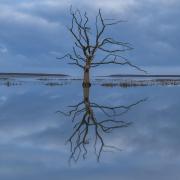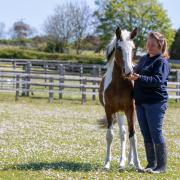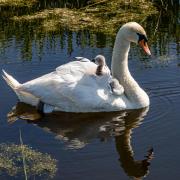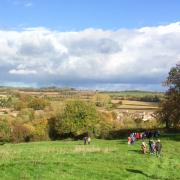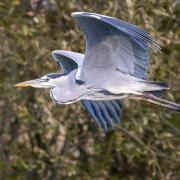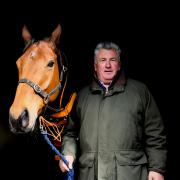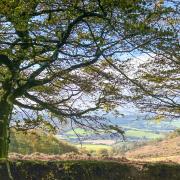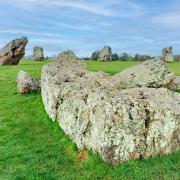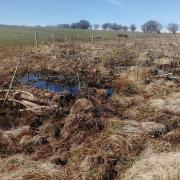It is no surprise that Somerset has been, and continues to be, a source of inspiration for many writers.
WOODY RIVER explores the impact of the local landscape and people on the poetry of Wordsworth and Coleridge In 1797 the war between France and the United Kingdom had been raging for five years, Britain was invaded in the Battle of Fishguard and Horatio Nelson had part of his right arm amputated after being wounded during the Battle of Santa Cruz de Tenerife. It was also the year that the poet, William Wordsworth, moved to Somerset to be closer to his fellow poet and friend, Samuel Taylor Coleridge, in what was to be one of the most important and exciting writing partnerships in English literature, and which would result in the publication of Lyrical Ballads.
Wordsworth had been living in Dorset with his sister Dorothy, but eager to be closer to Coleridge, they moved to Somerset in the summer of 1797. Initially the Wordsworths resided with Coleridge and his family in their small cottage in the village of Nether Stowey, but two weeks later they moved to Alfoxton House, which was situated in a deer park three miles away in Holford. “There is everything here,” wrote Dorothy in a letter dated 4 July, “sea, woods wild as fancy ever painted, brooks clear and pebbly as in Cumberland, villages so romantic; and William and I, in a wander by ourselves, found out a sequestered waterfall in a dell formed by steep hills covered with full-grown timber trees.” The wild, varied landscape of the Quantocks was to be the ideal location to inspire the poetic imaginations of both Coleridge and Wordsworth.
During the year they were neighbours, Wordsworth and Coleridge spent much of their time together. Most days they walked for several hours over the hills and through the woods of the Quantocks, and echoes of that natural environment recur within their poetry from this period. On 19 March 1798, in her journal, Dorothy described a walk she and William had taken near Alfoxton: “We were met on our return by a severe hailstorm. William wrote some lines describing a stunted thorn.” These were later developed into the poem ‘The Thorn’ in which he writes:
Not higher than a two-years’ child,
It stands erect this aged thorn;
No leaves it has, no thorny points;
It is a mass of knotted joints,
A wretched thing forlorn.
Coleridge’s The Rime of the Ancyent Marinere, also published within Lyrical Ballads, is said to have been inspired in part by the landscape around Watchet harbour. The idea for the poem was conceived during a walk to the Valley of the Rocks near Lynton in Devon. As Wordsworth and Coleridge approached Watchet, they began to plan the outline for a ballad, the initial inspiration for which was taken from a strange dream which had been recounted to Coleridge by his friend John Cruikshank. It is probable that the following lines describe the village of Watchet with its church of St. Decuman on the hill and its backdrop of wooded hills:
The ship was cheer’d, the
Harbour clear’d -
Merrily did we drop
below the Kirk, below the Hill
Below the Light-house top
Though there was no lighthouse in Watchet in 1797, there was one on the island of Flat Holm, off the coast of Wales, which Coleridge would have been able to see from his walk along the Quantocks, looking down upon Watchet. In the seventh and final part of the poem, the Ancient Mariner reveals that the “Hermit good lives in that wood which slopes down to the sea.” This reference to a hermit strengthens the probability that the ‘Kirk’ is the church of St. Decuman. On his arrival from Wales in the seventh century, Decuman had originally built a hermitage, where he lived with his cow prior to building the church.
Many of Coleridge’s poems from this period reference the countryside through which he daily walked. In The Nightingale, “a grove of large extent, hard by a castle huge which the great lord inhabits not” refers to Enmore Castle, which in 1797 was an impressive building in the village of Enmore, five miles south east of Nether Stowey. It had been the childhood home of Spencer Perceval, who in 1812 would become the only British Prime Minister to be assassinated. Even the exotic location of the gardens and pleasure dome of Kubla Khan contain echoes of the waterfalls, woods and hills of the Quantocks.
In the preface to the second edition of Lyrical Ballads, published in 1800, Wordsworth explained that “low and rustic life was generally chosen because in that situation the essential passions of the heart find a better soil in which they can attain their maturity, are less under restraint, and speak a plainer and more emphatic language.” Many of the poems within the collection contain portraits of people inspired by local peasants. Simon Lee tells the story of “an old huntsman” who, out of necessity continues to work, despite his weakened physical state:
And he is lean and he is sick,
His little body’s half awry
His ankles they are swoln and thick
His legs are thin and dry.
Though the poem claims to be set in Cardigan, the inspiration for the huntsman was drawn from Christopher Trickie, a local man who lived with his wife at the dog pound by the entrance to Alfoxton Park in Holford. Similarly The Last of the Flock is based on the story of a local Holford farmer. In the poem the farmer struggles to feed his 10 children and so requests relief from the parish. They refuse to give it to him, advising him instead to sell his sheep to buy bread, and so, one by one, the farmer sells his entire flock. By recounting the stories of people affected by poverty, Wordsworth was not only granting himself poetic opportunities to utilise his characters’ “plainer and more emphatic language”, he was also making a political statement about the lives of the rural poor.
Though Wordsworth is more commonly thought of in connection with the Lake District, it was here, in Somerset, at the beginning of their poetic careers, that both he and Coleridge were to experience their most creative periods. Due in part to the intensity of their writing partnership, their success was also a direct result of the inspiration they drew from the landscape and people of Somerset.
* Woody River runs literature courses at Stoke Lodge Adult Learning Centre in Bristol, Frome Community Education, and City of Bath College.




